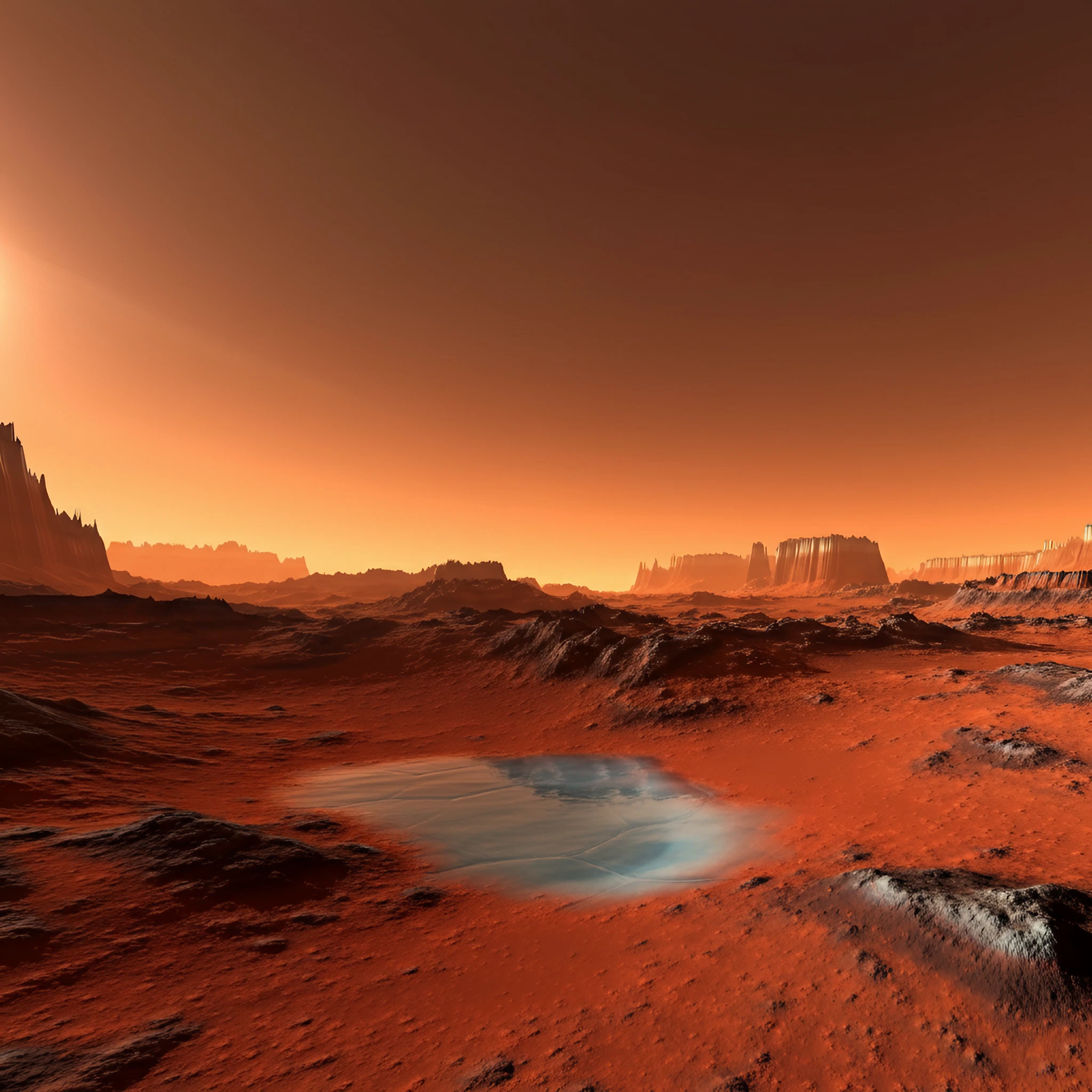Mars has long fascinated scientists, and the quest to understand its mysteries continues to break new ground. Among the most intriguing discoveries is the presence of water ice on Mars. This revelation has massive implications for understanding the planet’s history, its potential for harboring life, and its role in humanity’s future in space exploration. Let’s take a detailed look at what we know about water ice on Mars, its scientific significance, and what lies ahead.
Evidence of Water Ice on Mars
Evidence suggests that Mars harbors significant amounts of water ice. This has been verified through various methods:
- Satellite Imagery
Orbiters like NASA’s Mars Reconnaissance Orbiter (MRO) have captured high-resolution images showing ice deposits, especially near the poles. Their instruments, such as radar systems, reveal layers of water ice beneath the surface.
- Rover Data
Rovers like Perseverance and Curiosity have provided critical data about Mars’ icy terrain. Using onboard instruments, these machines analyze the composition of the Martian surface and have confirmed the presence of frozen water in regolith samples.
- Spectroscopic Analysis
Advanced spectroscopic tools allow scientists to identify the unique chemical signatures of water molecules. By analyzing sunlight reflected off the Martian surface, researchers have pinpointed the regions rich in water ice.
- Seismic Data
Recent studies using NASA’s Mars Insight Lander have gone even deeper. By analyzing seismic wave velocities, researchers have found evidence of fractured rocks saturated with liquid water beneath Mars’ crust, as reported in PNAS.
This combination of technological advancements provides a compelling case for the widespread presence of water ice across the planet.
Location and Distribution
Water ice on Mars is not evenly distributed. Here’s a breakdown of where it is found:
- Polar Caps: Most of the water ice exists in the northern and southern polar regions, forming thick caps that are visible from orbit. These caps also contain layers of frozen carbon dioxide (dry ice).
- Subsurface Deposits: Water ice isn’t limited to the poles, though. Beneath the surface, even at mid-latitudes, radar and seismic data have revealed significant ice deposits hidden under layers of soil.
- Seasonal Variations: During winter, water ice and carbon dioxide freeze into the surface, sublimating (turning directly from ice to vapor) when temperatures rise. This dynamic system demonstrates Mars’ active and shifting climate.
Formation and Preservation
Water ice on Mars has likely formed through a combination of processes over billions of years. Here’s how it may have occurred and been preserved:
- Ancient Atmosphere: Billions of years ago, Mars likely had a thicker atmosphere and abundant liquid water on its surface. The gradual cooling of the planet, combined with atmospheric loss to space, caused much of this water to freeze.
- Climate Cycles: Periodic changes in Mars’ axial tilt (obliquity) might have caused water to migrate between the poles and other regions, shaping the current distribution of ice.
- Burial and Preservation: Subsurface ice is protected from solar radiation and micrometeorite impacts by layers of soil, preserving it over geological time scales.
Scientific Significance
Why does water ice on Mars matter so much? Here’s why it’s revolutionary for science, exploration, and beyond.
1. Understanding Mars’ Past Climate
The presence of water ice offers clues about Mars’ ancient climate. Exploring the layers of ice can reveal insights into its atmosphere and surface conditions billions of years ago, when rivers and lakes carved valleys into the terrain.
2. Search for Life
Water is a necessary ingredient for life as we know it. Discovering preserved ice or even liquid water increases the likelihood of finding signs of microbial life, past or present, underneath the planet’s surface.
3. Human Exploration
For future astronauts on Mars, water ice is invaluable. It can provide a sustainable source of drinking water, be split into oxygen for breathable air, and hydrogen for rocket fuel. Essentially, water ice could unlock Mars as a second human outpost.
4. Planetary Resources
Understanding how Mars preserves water ice could help scientists manage frozen resources on Earth and expand resource utilization technologies for space missions to other planets, moons, or asteroids.
Future Research
Much work remains to deepen our understanding of Martian ice. Many research initiatives already aim to uncover new details about these icy deposits.
Ongoing and Planned Missions
- ESA’s ExoMars Mission (planned for launch in 2028) will focus on subsurface analysis, potentially locating deeper reservoirs of ice or liquid water.
- NASA’s Mars Ice Mapper Mission will use advanced radar technology to map water ice just below the surface and pave the way for future lander missions targeting these resources.
- China’s Tianwen-3 and Mars exploration programs are designed to enhance our understanding of Martian geology, including ice deposits.
Potential Discoveries
Data points to water ice scattered more widely than initially thought. There is high optimism among scientists that new missions could find accessible ice outside the polar regions, better aligned with potential human landing sites.
Challenges to Accessing Mars’ Water Ice
While water ice is abundant, tapping into this resource isn’t without obstacles. Subsurface water is often buried deep under rock layers, requiring advanced drilling equipment. The liquid water reservoirs detected by seismic studies are particularly inaccessible, lying at depths of 7–12.5 miles below the surface. Drilling such depths on Mars is currently beyond our technological capabilities. Nevertheless, advancements in robotics, AI, and drilling technologies may provide solutions in the future.
Shaping Our Future on the Red Planet
The discovery of water ice on Mars is one of the most important steps in unlocking the secrets of the Red Planet. It sheds light on Mars’ ancient climate, offers hope for finding potential life, and lays the groundwork for future human missions. From polar ice caps to deep underground reservoirs, Mars’ water offers unprecedented opportunities for science and exploration.
For now, Mars continues to tease us with its icy mysteries. But with every mission and discovery, humanity inches closer to understanding its potential as a new frontier for exploration.








